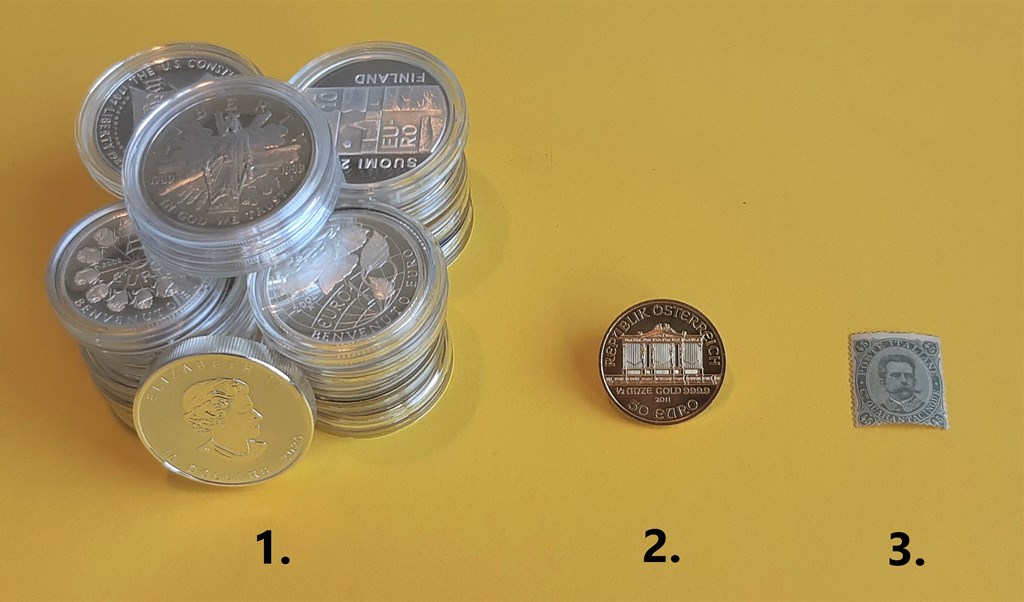Collecting as an alternative investment
People have been surrounding themselves with nice things since time immemorial. It is here that you need to look for the beginnings of collecting. Collections of fine arts of royal families, aristocracy or pontificates can be considered the first acts of collecting. However, such collections were a matter of a narrow group of people, and an ordinary person could only scarcely get acquainted with them. Perhaps the first event that inspired the creation of collecting as we know it today was the issuance of the first postage stamp in 1840. It was the postage stamp that met several attributes to become a sought-after collector’s item: it was interesting, affordable, widespread, it connected the world by post, and represented the country that issued it. People didn’t throw away stamps but started collecting, exchanging, cataloguing them. This is how philately has become probably the most widespread object of collecting in the world.
Of course, philately is not the only area of collecting, perhaps the most famous one is the collection of coins – numismatics. The beginning of numismatics should be sought in the collection of medals, but they were meant only for a close circle of people and an ordinary person did not have access to them. Although the invention of money and coins is much older than postage stamps, collecting coins (numismatics) in the form as we know it today appeared practically simultaneously with philately.
Collectors driven by their passion began to expand, promote, exhibit their collections. This has caused people to become increasingly interested in acquiring objects of their collector’s interest, not only by simple exchange but also by buying. Collections became an object in which money was invested.
So much about history. But is collecting today an activity that (in addition to pleasure) can bring us preservation or appreciation of our money?
Philately
There are several reasons for collecting postage stamps. In addition to the pleasure itself, it is a collector’s item which is probably the best catalogued. As soon as the first postage stamps were issued, their first catalogues began to be created. Today, it is difficult to find a postage stamp that would not be recorded in any world catalogue (MICHEL, YVERT, SASSONE, UNIFICATO). Good cataloguing is a great advantage, because you can practically immediately determine the value of the stamp or the development of its price. What stamps to collect? It’s always a choice between emotion and reason. Not always what we like must be valuable and vice versa. It is advisable to focus on collecting postage stamps of one country or period or theme and collect stamps of only excellent quality. In the case of genuinely valuable stamps, be sure that they are not counterfeits and, where possible, secure certificates from reputable experts. Buy philatelic material from reliable suppliers. It is necessary to follow trends – even in philately, requirements of the market are subject to “fashionable” trends, which will change with time. Keep in mind that there may always be a moment when you want or must part with your collection.

Figure 1: Comparison of investment silver (1st), gold (2nd) and philatelies (3rd) with a current value of about EUR 1,000.
Numismatics
Unlike philately or other branches of collecting, numismatics has the advantage of always retaining at least the value of the material from which coins were made. This also results in their better liquidity. What coins to collect? The same applies as to philately – it is good to focus on one state, area or period. As regards the quality of collector coins (especially new ones), it is preferable in the long term to focus on collecting coins of the highest quality (PROOF, PROOFLIKE). Although the purchase price of such coins is slightly higher, their appreciation is higher in the long term than that of the normal (UNC, U, BU).
As everywhere, phenomena exist also in numismatics. One of them is coins issued by countries that are members of the Euro zone called euro coins. At the beginning of the Euro-monetary euphoria, there were many voices predicting that this area will gradually get less interesting – but the opposite is true. The collection of euro coins continues to develop and is becoming increasingly popular. We can speculate on the reasons, but it certainly has to do with their uniformity, their prevalence and pride of every state that has become a member of the Euro zone.
Finally, I would just like to add that, with a wise collection of postage stamps or coins, there is a good chance that the money invested will be better valued than is currently the case in financial institutions. The history of collecting postage stamps and coins, which has been going on for 180 years, only confirms this. However, the pleasure of creating your own collection is a value that is difficult to quantify with money.
Photograph No. 1 used in this article – private collection of the author.